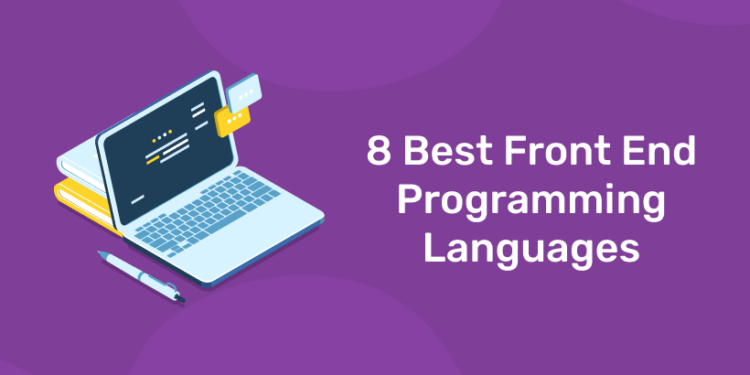The area of a website that users interact with is called the front-end. The fonts, colors, drop-down menus, and sliders you see when browsing the Internet are all the result of a combination of HTML, CSS, and JavaScript that your computer’s browser manages. The architecture of an immersive user experience design on a website and the user-facing code are both handled by front-end engineers. Overall, a front-end developer is in charge of designing the interior of a home that a back-end developer has constructed.
Learn to code from industry experts! Enroll here!
One of the most crucial components of making user-friendly mobile and online applications is front-end development. A front-end web developer is a person who makes everything you see on a website, including the buttons, links, animations, and other elements. The front-end developer’s responsibility is to translate the client’s vision and design concept into code. Front-end web development, also known as client-side development, is the process of constructing HTML, CSS, and JavaScript for a website or Web application so that a user can view and interact with them directly. The difficulty with front-end development is that the methods and technologies used to build a website’s front end are continually changing, necessitating constant monitoring of the industry’s advancements.
Programming Languages for Web Development
It’s crucial to choose the right choice for your web development project’s programming language. An outstanding decision speeds up project development and makes it easier for your development team to incorporate key features. Although there are many distinct programming languages, JavaScript, HTML, CSS, PHP, and other languages are the most often used ones in web development. According to Statista, over 65% of developers worldwide use JavaScript. Let us look into some important programming languages for web development.
- JavaScript
You can edit any section of a website and build brand-new pages from scratch if you have JavaScript installed on your PC. One of the most popular choices among designers is JavaScript because it has strong browser support and is already enabled by default for the majority of Internet users.
- HTML
Of all the coding languages, HTML is the most fundamental. HTML will give you a strong basis for website development if you intend to create a website or online application. Since HTML is the foundation upon which most websites are created, a competent developer may style your code to meet your unique needs. HTML gives you a solid place to start when building code that does more than just show information on the screen. Additionally, if you intend to share your information online in the future, learning how to create simple pages can be useful.
- CSS
The language CSS (Cascading Style Sheets) specifies how HTML texts should be presented on screens, in print, and other media. CSS is essential to contemporary web design because it enables designers to separate style from content. As a result, it is simpler for numerous individuals to work on various components of a website because they can change styles without unintentionally disrupting other elements. At its foundation, CSS provides methods for formatting text elements on a website using specified fonts and colors, such as headings or paragraphs.
- PHP
One of the most widely used server-side programming languages nowadays is PHP. PHP is a wonderful place to start if you want to design dynamic websites with WordPress, launch a career as a web developer, or expand your current skill set.
Enhance your web development skills. Join Entri now!
The language is built on C and borrows heavily from JavaScript, making it particularly simple to learn if you have previous coding knowledge. Additionally, PHP offers expert programmers the greatest degree of flexibility when building code for business websites because it is free and runs on all popular platforms, including Windows, Linux, and Mac OS X.
Front End Languages
One of the most crucial components of making user-friendly mobile and online applications is front-end development. describes how the user will see the application. A user interface needs to be practical, interactive, and visually appealing. Frontend languages are important for developing apps. Let us look at the top 8 front-end languages:
1. HTML
Hypertext Markup Language, or HTML, is a programming language used to create electronic texts known as pages that are displayed on websites. Each page has numerous hyperlinks or links to other pages. Every web page on the Internet has been created using HTML in some capacity. Understanding how to display texts or carry out the loading of various elements is a must for browsers.
- React
Facebook created the programming language React to build quick and innovative web user interfaces. A superb choice for full stack development, it is now one of the most popular JavaScript frameworks for building web front ends. React is a computer language that may be used to build visual user interfaces and render data for browsers. Check out the main characteristics, benefits, and ease of front-end web development with React below.
- Angular
An open-source JavaScript framework built on TypeScript is called Angular. One of its key objectives is to create single-page apps, which are run by Google. As a framework, Angular has obvious benefits and gives a consistent framework for programmers to work with. It enables users to easily manage large apps they create. Uses TypeScript is Angular. Users can build more intelligible JavaScript code by using a collection of types called TypeScript. JavaScript may be used to compile all TypeScript code, allowing it to execute on any platform.
Learn Coding in your Language! Enroll Here!
- Vue
Developed by former Google employee Evan You, Vue is a JavaScript framework that is also open-source. It is utilized to create single-page apps and user interfaces. Vue employs virtual DOM, which is a React idea used by Vue. Vue does not update the full tree; it only updates any modified HTML. Performance that is quicker and bug-free is ensured. Reactive two-way data binding is used by Vue. It selects the most effective way for updating the element based on the input type.
5. jQuery
A popular and well-known JavaScript framework and application development environment is jQuery. It has characteristics that make the job of a JavaScript application developer much easier and is smaller, faster to load, and loaded with features. JavaScript is no longer grafted onto stateless HTML as an afterthought. From PCs to tablets and smartphones, it is increasingly employed as the basis and the main engine for web development and application development.
- Swift
Swift is a strong and simple programming language for iOS, iPadOS, macOS, tvOS, and watchOS. The syntax of Swift is straightforward yet expressive, and it includes contemporary features that developers value. Swift code is interactive and interesting to create. Swift is extensively used for several factors, including its low cost, emphasis on safety, developers’ efficiency and mobility, and sizeable user base.
- Elm
A functional language and framework designed for front-end programming are called Elm. It is the foundation of the Haskell programming language and improves JavaScript’s capacity to be maintained. It is a basic programming option and one of the alternatives that are most similar to JavaScript. Redux-like framework architecture is present in Elm. Elm provides developers with clear functions, inputs, and outputs. Users produce a predictable output for every function input. The logic of the code is simplified.
8. CSS
Despite being a style sheet, CSS is regarded as the best frontend language. Cascading Style Sheets, or CSS, is a design language that makes it easier to present web pages. Elements can be chosen and given styles using selectors. A document can be formatted in a way that audiences can comprehend using CSS. This is crucial for browsers like Chrome, Firefox, and Edge that are made to present content graphically to screens, printers, and projectors.
Conclusion
All of the aforementioned front-end development languages are deserving of developers’ consideration. You can examine the benefits, drawbacks, and features to determine which is the best choice for your particular programming requirements. You may create high-caliber user experiences and accomplish ideal development outcomes by using the right language.













